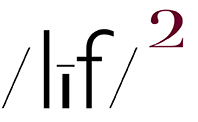WITH ALL OF THE ATTENTION GIVEN TO COLOR PHOTOGRAPHY, most notably on TOP, I must admit to being rather flummoxed, aka: confounded, or, simply confused, re: the idea of what is color photography and/or who is a color photographer?
It would be simplistic to write that / everyone who makes photographs with a device or materials capable of rendering reasonably accurate colors of the real world-as seen by a healthy human eye-is; a) making color photographs, and, by reasonable extension, 2) a “color” photographer. However, it would seem that in some quarters, just making color photographs is not enough to qualify one as a “color” photographer.
Apparently there is some other criteria that must be meet in order to be consider as a color photographer”. And, therein is where my confusion resides.
iMo, making color photographs makes one a color photographer. To my way of thinking, it is as simple as that. However…..
….I believe it to be indisputable that there are good color photographs and…gasp…not-so-good color photographs. iMo, the difference between the two is very easy to identify. A good color photograph is, quite simply, first and foremost, a good photograph.
My definition-influenced by my bias(es)-of a good photograph is summarized by this Cartier-Bresson quote:
“To me, photography is the simultaneous recognition in a fraction of a second the significance of an event, as well as the precise organization the forms that give that event its proper expression. And this organization, this precision, will always escape you, if you do not appreciate what a picture is, if you do not understand that the composition, the logic, the equilibrium of the surfaces and values are the only ways of giving meaning to all that is continuously appearing and vanishing before our very eyes.”
I would substitute the phrase moment in time for the word event (a moment in time could include an “event”). However, that written, to my eye and sensibilities, the overall form seen in a photograph derives from the organization of the visual elements-line, shape, space, color and value-as framed and presented in the photograph. That organization is, in essence, balancing act. All of the visual elements must conspire to create a congruous whole-congruity determined by what the photographer wishes to express.
And, when it comes to color, I think it important to understand that the colors as presented in a photograph are just one visual element of any number of other visual elements that might be found in a good photograph. In my experience, I have found that color photographs that are saturated with color-or color(s) that has been over saturated-for color’s sake tend to slide over into the category of kitsch and dreck.
ASIDE Nevertheless, kitsch and dreck rarely fail to elicit fawning praise from the unwashed masses. cuz, ya know, no one ever went broke underestimating the taste of the American public. END OF ASIDE
All of the above written, I would guess that therein could be found my definition of what constitutes a good color photograph and that a photographer who makes good color photographs is a good photographer. Although…
…I’ll stick with the idea that there is no such thing as a good color photographer, or for that matter, a good monochrome photographer. iMo, there are only good photographers as defined by their making of good photographs of any variety.
